Ah, finally it is finished. This work grew longer than expected but with a bit of hindsight that is also logical: for example I spell out in detail once more how to find the eigenvalue functions for a arbitrary number X. After all that is an important detail so it is worth repeating. But I skipped the proces of diagonalization because we do not need it in this post.
Yet if you teach math and the time has come to do the complex number stuff, you could show the students how to diagonalize the complex multiplication for numbers from the complex plane. Most of the time students only diagonalize just one matrix with some numbers in it and that’s all, they never diagonalize an entire family of matrices. So that is why that would be useful, on the other hand the eigenvalues for a number z from the complex plane is z itself and it’s conjugate… And say for yourself: diagonalizing a number z so that later you must multiply the eigenvalues (also z) is very useless, as a matter of fact it is hard to find anything that is more useless… And once you have explained that diag stuff is usefull and utterly un-usefull at the same time, you can point to the live of the average math professor: also utterly useless…
Of course in higher dimensions the proces of diagonalization is very handy because it gives you for example a way of calculating the logarithm of higher dimensional numbers. And that way can be used in any dimension while all other methods for finding a logarithm get more and more difficult (as far as I know).
In this post I also worked out in detail what the eigenvalues of non-invertible numbers are; the non zero numbers with a determinant of zero have at least one eigenvalue being zero. I calcualted the eigenvalues for the numbers tau and alpha for both the complex and circular 3D multiplication.
This is post number 150 so all in all on average I write just about 30 posts a year. That is a cost of about 2€ per post… 😉 Luckily this hobby of 3D complex numbers is a rather cheap hobby while at the same time it keeps the mind sharp. A disadvantage is that if it takes me just 5 or 10 minutes to do some calculations with pencil and paper, it often takes 5 to 10 hours before it is turned into a post that is more or less readable for other people… And that is something I value highly; so often you come across sloppy explanations that are not carfully thought through. I don’t like that.
Originally I prepared 10 pictures to write the post on but I had so much text that I started expanding those pictures and in the end I made an 11-th picture to get it all on. So I just expanded those pictures to make the text fit more or less precise of most of them have weird sizes. May be it is better to just stick to the size of 550×775 pixels and just make more of them if needed and not this chaotic expansion on the fly.
Ok, here we go:
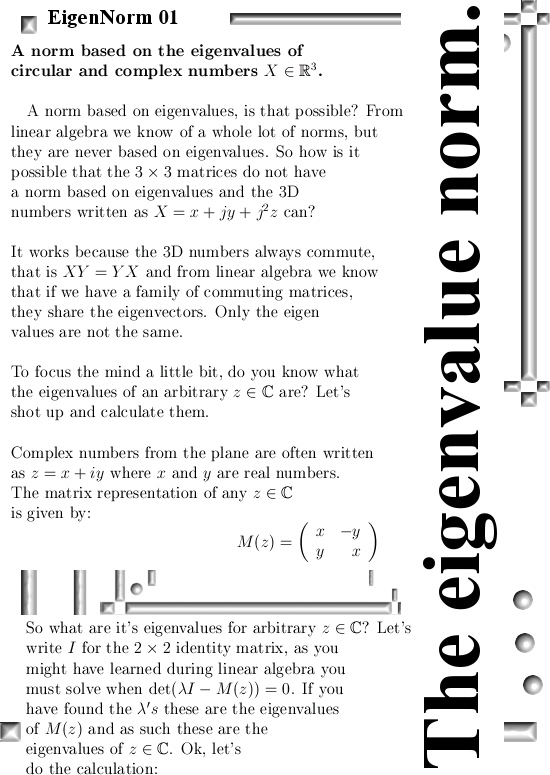
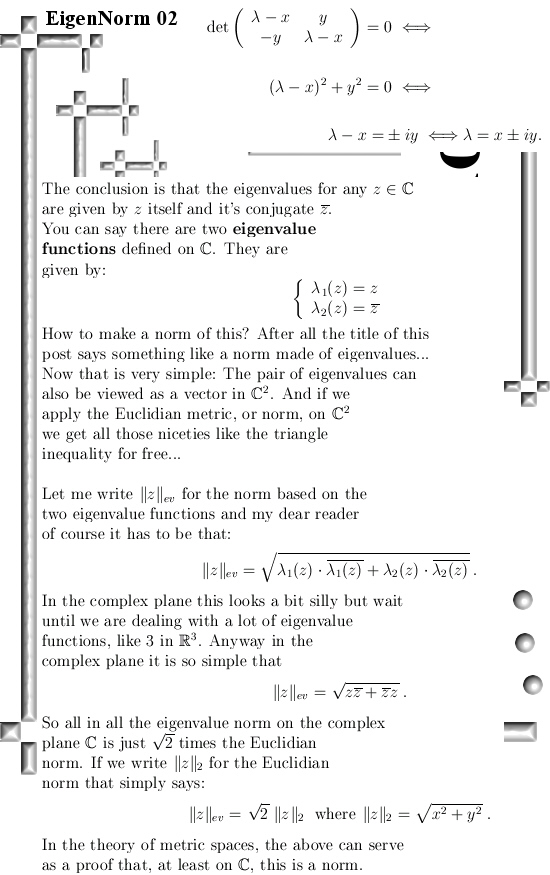
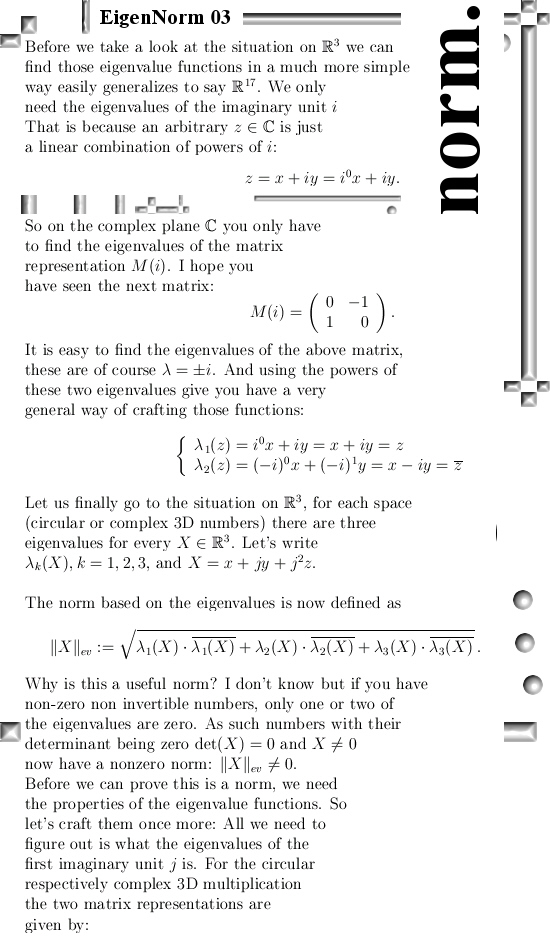
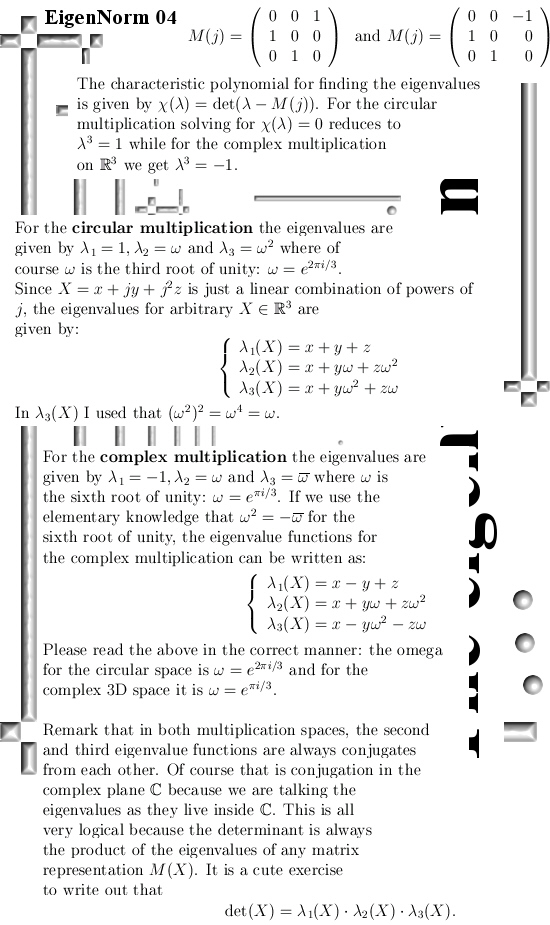
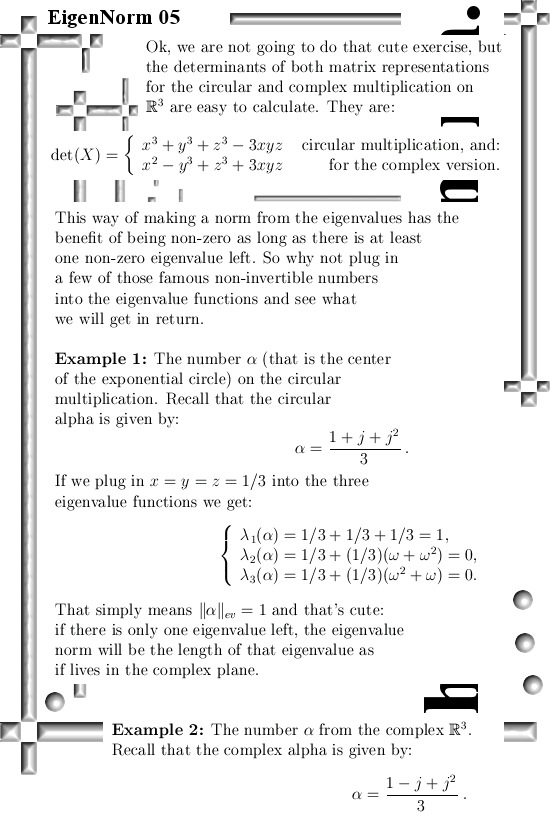
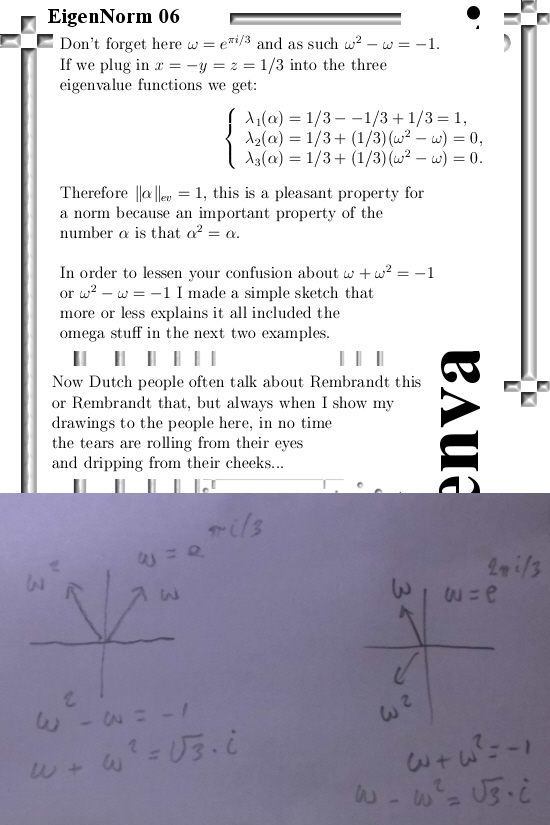
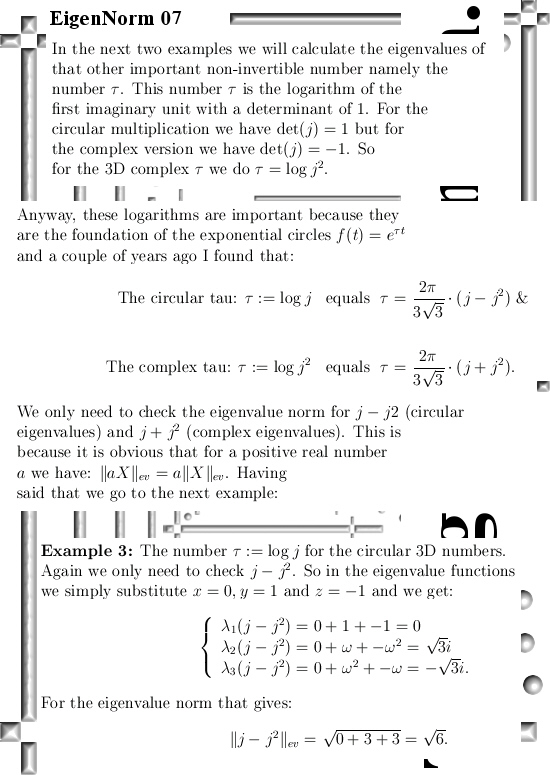
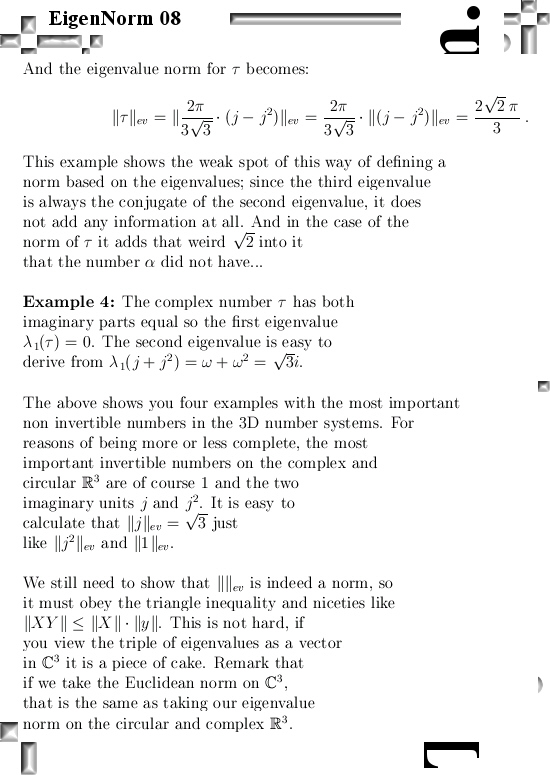
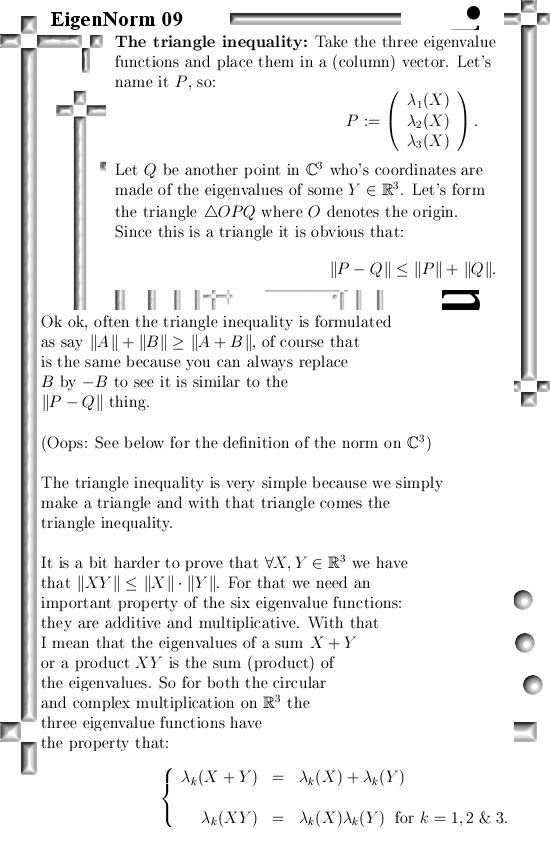
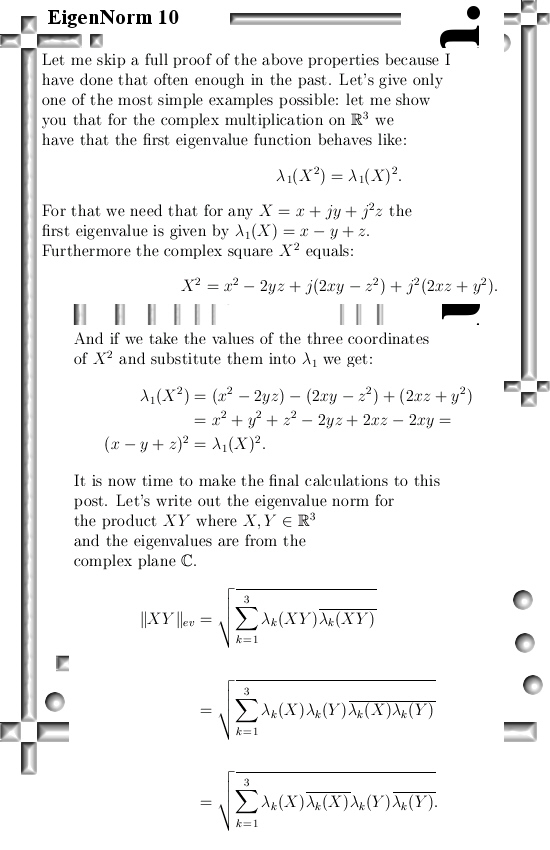
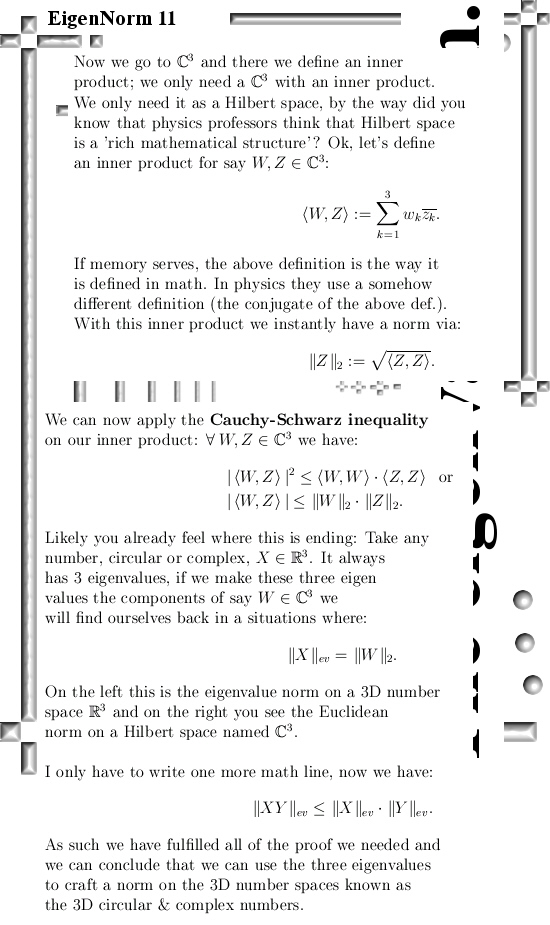
I expect that when you made it this far, you already know what the Cauchy/Schwarz inequality is. But in case you never heard of it, please try to understand that beautiful but very simple inequality. Here is a wiki: Cauchy-Schwarz Inequality. Link used: https://brilliant.org/wiki/cauchy-schwarz-inequality/
Ok, this is more or less what I had to say on the subject of crafting a norm from eigenvalues. Don´t forget in the complex plane the square of the norm is also the product of the eigenvalues of a complex number z. So for centuries the math professors are already doing this although I do not think they are aware that they use a product of eigenvalues. For them likely it is just some stuff that is ´Just like Pythagoras´.
End of this post.